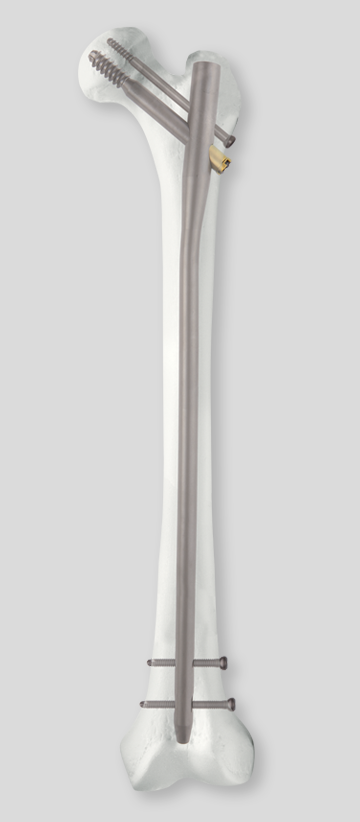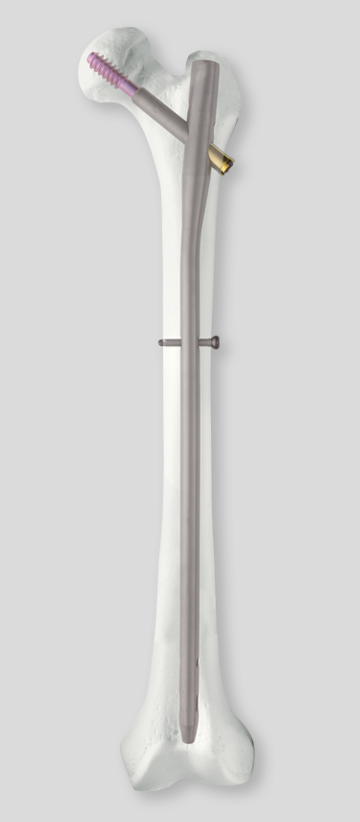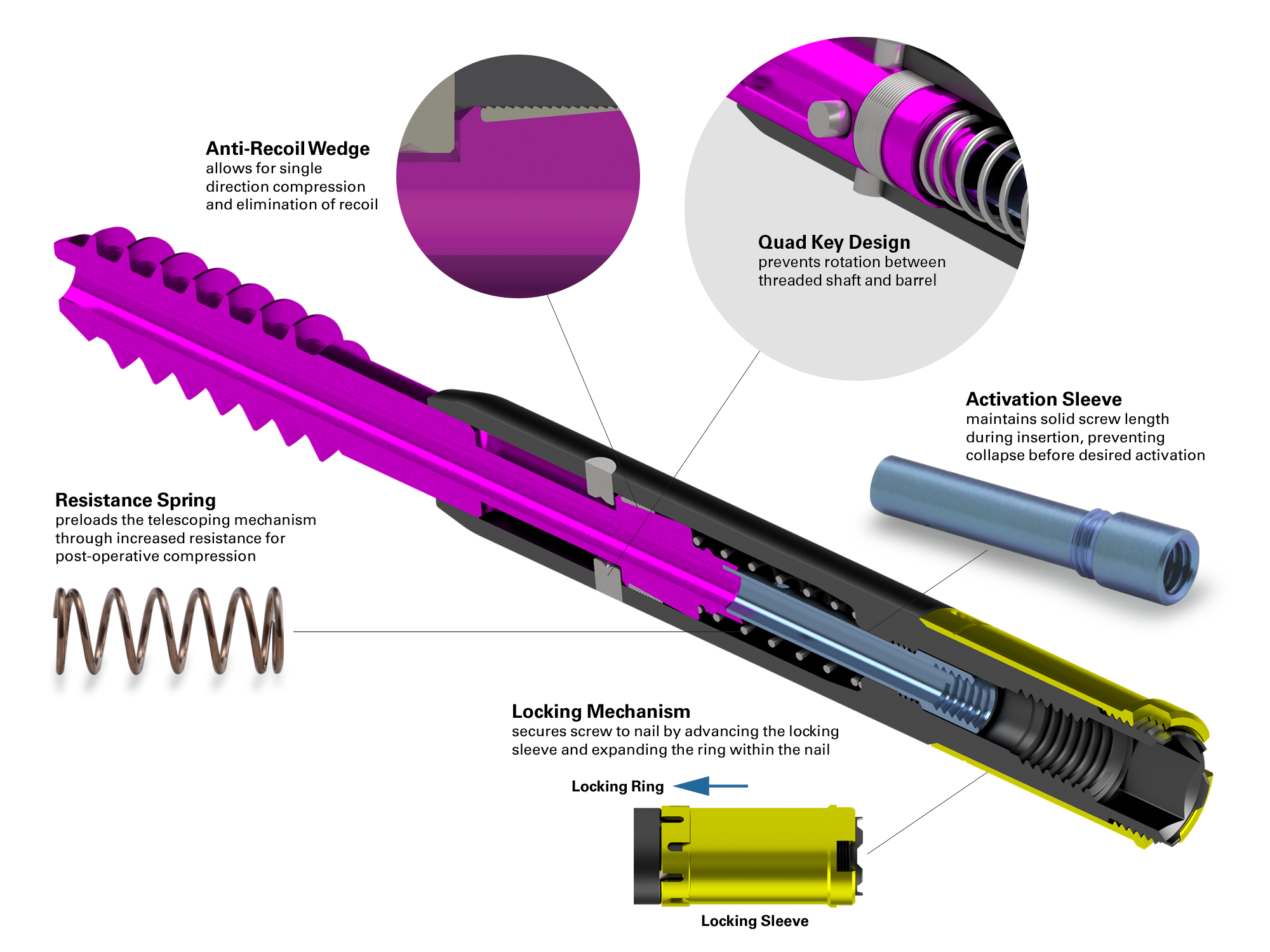Galileo Trochanteric Nail System
The AOS Galileo Trochanteric Nail System combines the mechanical advantage of a long nail with the ease of use of a short nail.
With an aging population more active than ever, the rate of hip fractures and surgical fixation has and will continue to increase substantially over the next several years. Along with this increase of hip fracture volume and coupled with the sizeable expansion of trochanteric nail usage versus side plates, we predict (by sure volume alone) a measurable increase of associated complications. Therefore, streamlining the surgical techniques and avoiding these complications are becoming increasingly more relevant. Thus, the ES nail was created in efforts to be a proactive instead of reactive solution.
Galileo Lag Screw
Discover Healing without Protrusion
ES Nail
The Ease of a Short Nail with the Security of a Long Nail
The ES Trochanteric Nail is intended for the treatment of basilar neck, inter and high subtrochanteric femoral fractures. Regardless of the preference of using a short nail or a long nail, a large percentage of the hip fractures encompass basilar neck, intertrochanteric or subtrochanteric (with minimal shaft extension). The ES nail allows you to place the Lag Screw (and the A/R Screw if desired) in the femoral head as well as a distal static screw (the ES hole) acceptably below the fracture, thus capturing the fracture more effectively than a standard long nail. The ES Hole is located 15cm distal to from the top rim of the nail, thus utilizing the same hole placement available with the AOS short trochanteric nail. Therefore, the ES Hole is as proximal as any competitive short nail locking holes on the market and is not located in the middle of the isthmus.
When the ES Hole is utilized, The ES trochanteric nail approximately doubles the torsional rigidity from a distally locked long nail and provides more rigidity than an unlocked long trochanteric nail. Furthermore, the ES nail extends through the isthmus of the bone, greatly reducing any “end of implant” stress risers, potential “pendulum” effects and the risk of peri-prosthetic fractures in which a short nail may be subject. Thus, the ES nail combines the mechanical advantage of a long nail with the ease of use of a short nail.
FEATURES & BENEFITS
Advantages Over a Short Nail Include:
Decrease peri-prosthetic fracture rate.
Eliminate stress riser at the end of nail.
Increased rotational rigidity.
Utilization of two points of fixation with the ES Hole and the anterior bow.
Advantages over a Long Distally Locked Nail include:
Simple Technique. ES Hole distally targeted.
No hassle of freehand distal interlocking screws.
Increased torque rigidity caused by the ES Hole.
Advantages over a Long Unlocked Long Nail:
Eliminates inherent rotational and distal AP motion created by the long nail “lever arm”.
Increased torque rigidity caused by the ES Hole.
Has an option of locking the ES Hole as well as distal holes (in special circumstances).
Advantages over a Side Plate (DHS):
Mechanically superior
Decreased moment arm.
Load Sharing, not load sparing.
Decrease hardware failure.
Decreased soft tissue dissection.
Decrease peri-prosthetic fracture rate.
Increased post operative mobility. Less blood loss.








